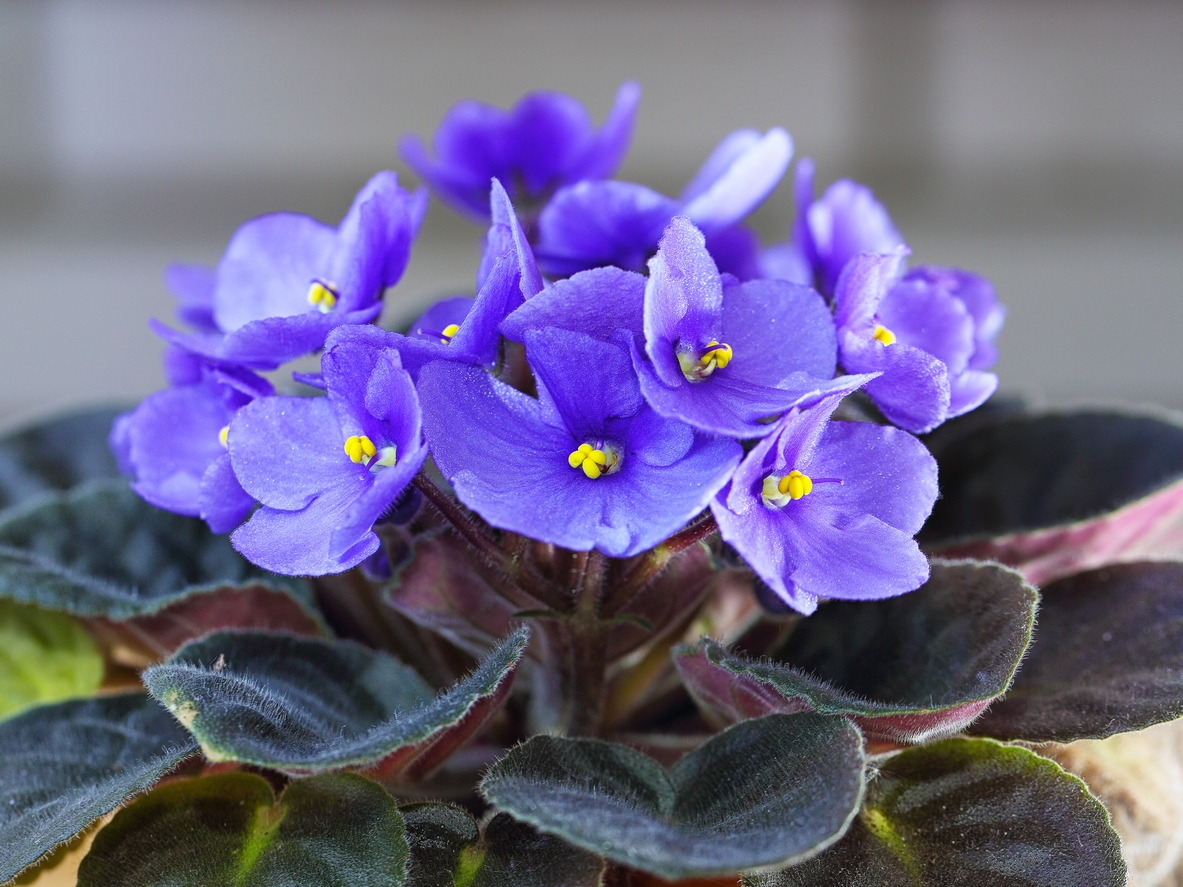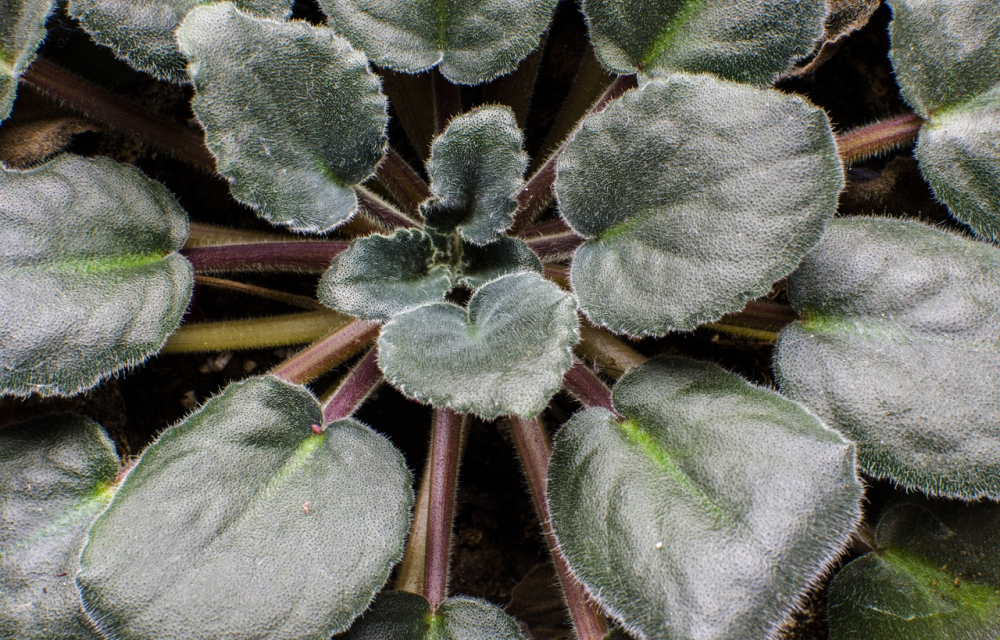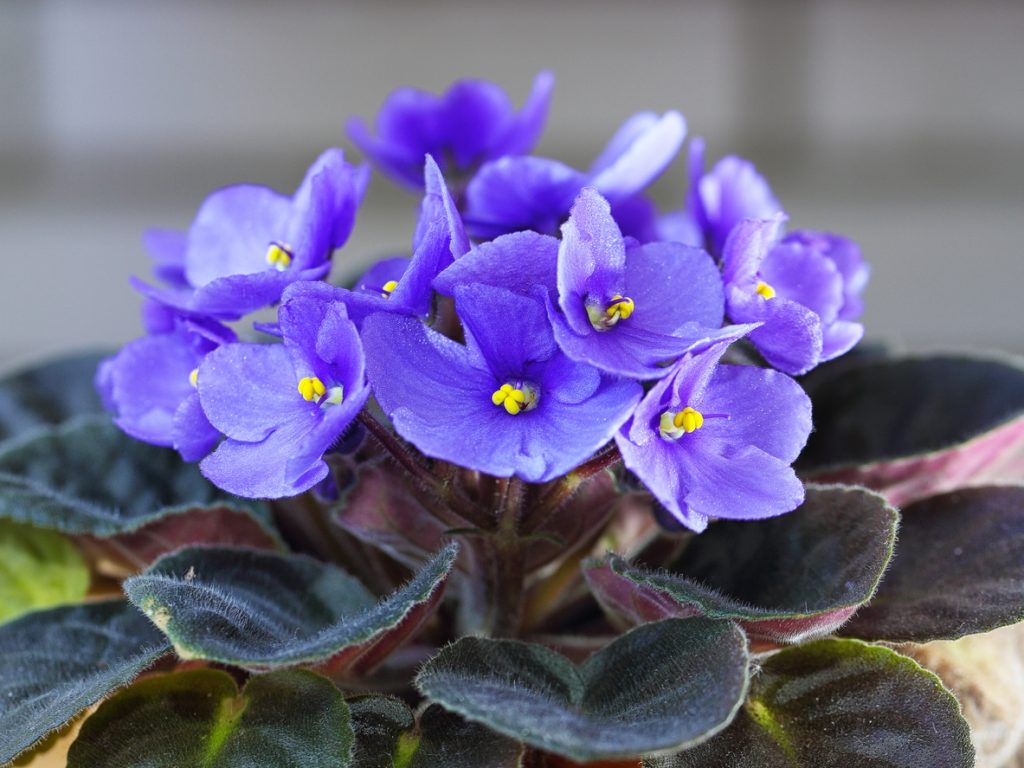African Violets Growing Problems – How To Keep African Violets Healthy
When you grow a houseplant like African violets you really hope it won’t give you a headache with care, pests, and diseases. While you might do everything you can to keep the plants healthy and happy, there are things that are beyond your control. And then again, some African violet growing problems are due to inadequate watering, the wrong growing medium, or not enough light. Either way, you have a pressing issue at hand that needs solving. So let’s go through the most common problems when growing African violets and what you can do to fix them.
African Violets Not Flowering
This problem is quite common and it can happen for many reasons. The African violet is growing well, the leaves are healthy, but there are no flowers. Once the blooms that came with the plant die, no more buds grow on the plant. And this could go on until the end of the flowering season.
One of the main reasons that the houseplant is not flowering is that the plant is in a state of shock due to the change in the environment. This is true for plants you buy at the nursery as well as those you repot or transplant.
Other reasons include inadequate light, irregular watering habits, low humidity levels, and using the wrong fertilizer among others.
How to Fix it
To help the plant regain its composure and start flowering again, you need to provide it with ideal growing conditions. Here are a few things you can do.
- Sun: The African violet needs between 6 to 8 hours of filtered sunlight every day during the growing season. Make sure the plant is getting enough sunlight to flower again.
- Water: The plants love the soil to be moist constantly. The roots are often sensitive to both drought and wet soil. Water it regularly and only give it enough water to get the soil moist.
- Humidity: As natives of East Africa, these houseplants are used to high levels of humidity in the air. Anything above 40 percent humidity is good enough for them. Place the pot in a tray full of pebbles and water to keep it humid and cozy for the violets.
- Temperature: The room should have a steady temperature between 60 to 80 degrees F. for the plants to bloom. If the temperature drops below these ranges, that could be the reason you’re not seeing any blooms.
- Fertilizer: You should use a fertilizer specifically designed for African violets. There’s a chance you’re using a fertilizer high on nitrogen and low on phosphorus.
Leaves are Curling
The broad leaves of the African violets are their claim to fame. Long after the flowers have faded, the plant remains the center of attention thanks to those glossy leaves. So when they start curling, you know you have a serious problem on your hands.
There are two main reasons for the leaves of the plant to curl under and fold upon themselves like that. The first is inadequate temperatures. If the room temperature drops below 55 degrees F, the plant goes into a self-preservation mood and folds its leaves to prevent water evaporation through the surface. This could also happen if you water the plant with cold water.
Another cause of this issue is mites. They cause more than just leaf curling though as they stunt the growth of the plant and damage the flowers.
How to Fix it
The easiest way to uncurl the leaves of the African violets and bring them back to their usual splendor is to fix the conditions around the plant. Here are a few steps you can take to remedy the situation.
- First things first, make sure the plant is basking in cozy temperatures between 60 to 80 degrees.
- Also check that it’s getting its fill of sunlight and averaging about 6 hours at least during the growing season.
- When you water the plant, don’t use cold water. Warm it up a little to avoid shocking the plant.
- If the plant is infested with mites, then there’s nothing to do but dispose of the plant and the soil and start a new African violet afresh.
Wrong Growing Medium
The wrong soil is perhaps the main cause of many African violet diseases and calamities. That’s because these plants need the soil to be properly aerated so that the roots get access to air. That rules out your regular soil and most of the commercial potting mix products in the market. Clay soil is too heavy and compact to allow air in, not to mention that it retains water for far too long. Loamy and sandy soil is not aerated enough for the taste of the violets either.
You can always buy African violet growing medium but that can be costly in the long run. And considering how often you repot the plants, you’ll need to buy the growing medium regularly. A better and more cost-effective option is to make your own growing medium at home.
How to Fix it
In its natural habitat in Africa, the plants grow between rocks covered with moss. Since you can’t replicate that at home, the second-best thing is to create a well-aerated growing medium with good drainage.
You’ll need perlite, vermiculite, soil, coarse sand, and worm castings. Mix the ingredients well at equal portions. The worm castings fertilize the soil and keep the plants growing well. Make sure the growing medium is well mixed and keep it sealed in a bag away from humidity.
When you want to repot a plant or start a new one, fill the pot with the medium and moisten it before planting.
Crown Rot On African Violets
Crown rot is another name for root rot. As a gardener, you probably have had your fair share of root rot that ruins plants large and small. It seems that no plant is immune to this lethal disease. Even mighty trees fall when the soil becomes waterlogged damaging the roots beyond repair. So when it comes to the finicky African violets, you need to be wary of the type of soil you plant it in and your watering patterns.
When the soil gets too wet for long periods of time, Pythium ultimum, a fungus that lives in wet conditions, starts to feed on the roots. Before long the roots are damaged, the leaves wither and fall then the plant itself dies.
How to Fix it
Since the roots are underground, there’s no way for you to keep an eye on them and monitor their health. However, you can take steps to prevent crown rot and make the growing medium as inhospitable to the fungus as possible.
- Use a growing medium specifically designed for African violets as detailed in the previous section. Don’t use regular soil since it’s poorly aerated.
- Water the plant regularly but lightly. Your goal is to keep the soil steadily moist but not wet enough to activate the fungus.
- Don’t let the soil dry out since that puts the plant under a lot of stress.
- If the plant is infected then you should get rid of both the plant and the growing medium in the pot.
African Violets Are Leggy
The last thing you’d want your ornamental houseplant to do is to become leggy. Leggy African violets have long branches, less foliage, and more barren space between the base of the plant and the lower leaves. It would look as if the violets have developed long legs and are ready to walk out of the pot. Although they don’t really move, the unsightly long stems are a sign the plant is getting on with age.
This often happens after a few years. The new growth would happen at the tip of the plant leaving the bottom parts leafless and barren. And as the bottom leaves die, no new shoots would replace them. But even young plants might get leggy as a result of mold or fungal infections.
How to Fix it
To prevent African violets from getting leggy before old age creeps in, you need to make sure the growing medium is well-fertilized. Poor nutrition is one of the main causes of leaves falling at the base of the plant. You can use organic, slow-release compost or a fertilizer rich in nitrogen will keep the plants growing well with full foliage.
When repotting the plant, always use a slightly larger pot. If you use a pot double the size of the old one, the plant might go through a sudden spurt of growth that leaves its stems bare at the bottom.
Experts recommend using a knife to expose the cambium layer of the bare stem. You’ll need to remove the dead leaves and scrape the skin off the stem to expose the inner layer. That usually triggers the plant to heal the cut and start a new leaf in its place.
Yellow African Violet Leaves
Yellow African violet leaves are more common than you think. Any time the plant is under stress, the leaves will turn yellow. You can think of it as the plant’s way of crying for help or getting your attention. To complicate things further, pests and diseases can also cause the leaves of the houseplant to turn yellow. So you’ll need to pull your horticulturalist hat tight and set out to examine the causes of the problem. Between too much or too little water to poor lighting and inadequate fertilizing, you got your hands full. So let’s break the problem down and see how you can address it.
How to Fix it
The main three conditions you need to focus on when the leaves of the houseplant turn yellow are light, water, and nutrition.
- Light: Your African violet needs between 6 to 8 hours of sunlight a day. That’s only during the growing and flowering cycles. And you cannot expose the plant to direct sunlight. Too much light bleaches the leaves and too light leaves them yellow and drooping. The best light is dappled or filtered light. A lace curtain will give you the right light. Or you can remove the pot from the window sill and place it about one foot away.
- Water: Keep your growing medium nicely moist at all times and don’t let it dry out or become waterlogged. If you’re using the right medium we discussed earlier, then there will be little risk of getting the pot waterlogged. But drought also causes the leaves to become yellow. So water the plant regularly to keep it moist.
- Fertilizer: As heavy feeders, the plants need rich soil and regular fertilizing during the growing season. Apply organic compost or aged manure about once a month. They release their nutrients slowly and keep the plants fed over a longer period of time.


